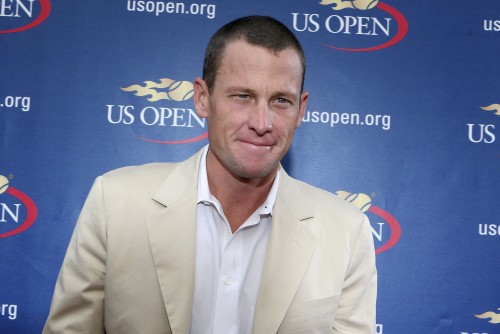
TENNIS ECHOES AND ARMSTRONG’S SHOCKING DECISION
Lance Armstrong’s decision not to contest the doping charges which he faced brought to mind Maria Sharapova’s comment that the best thing about leaving tennis would be the freedom to just go to a drug store without worrying whether what she would be taking would be acceptable to doping authorities.
Armstrong’s case is roughly similar to the painful experience of Martina Hingis, who chose not to contest a charge of cocaine use. After being informed of a positive drug test taken during Wimbledon, the five-time Slam champion denied ever using cocaine and announced her second retirement from tennis. She said, “I find this accusation so horrendous, so monstrous…. I’m 100 percent sure I took nothing. I’m frustrated and angry,” said Hingis who was 27 at the time.
After finishing a two-year suspension from the game, (in which she wasn’t even allowed into the Grand Slam stadiums,) she told Jon Wertheim, “I probably had between 80-100 tests and no problems. The only thing I would ever take was aspirin, and I was very particular about these things. Even if I had a flu I’d call my doctor and say, “What can I take?” I was always very cautious. I never took anything that was not approved first.” Now, Hingis is a smiling, high-profile tennis elder and there was talk of her playing the Olympic mixed doubles with Roger Federer. But, at the time, some were not sympathetic. One example: ESPN The Magazine mused, “Hmmm, we always thought they played that [tournament] on grass.”
- Frenchman Richard Gasquet, who just reached the final of the Rogers Cup in Toronto, had charges of his cocaine use dropped when a tribunal ruled he inadvertently ingested the drug when he kissed a girl in a Miami nightclub.
- The late wheelchair tennis whiz Randy Snow, who was recently inducted into the International Tennis Hall of Fame, once noted that, “Lance Armstrong says he owes everything to cancer because the cancer – the adversity – made him the champion he is today. . . . Wheelchair tennis taught me how to adapt, it taught me to compete with myself, not to compare. Wheelchair tennis is not about forehands and backhands, trophies and money – it’s about taking a risk, looking at what you can do and getting outside your comfort zone.”
- Early in his career Andy Murray watched Lance Armstrong videos as part of his training.
- Probably no other current player has been accused of drug use more frequently than Rafa Nadal. Coincidently, the muscular Spaniard who has been tested time and again, has seven French Open titles. Before his victories were stripped, Armstrong won the Tour de France seven times.
- Inspired in 2004, by his fellow Austin resident Lance Armstrong, Andy Roddick began to use “no compromise” wristbands to boost his highly successful foundation.
- Before she fully recovered, Corina Morariu, who was struggling with leukemia, appeared at the U.S. Open’s Arthur Ashe Day. The former Wimbledon doubles champion who was worried about her recovery said, “It’s just great to be here. Everyone has been so supportive …We’re not all Lance Armstrong, as nice as that would be.” Morariu went on to have a strong recovery.


















